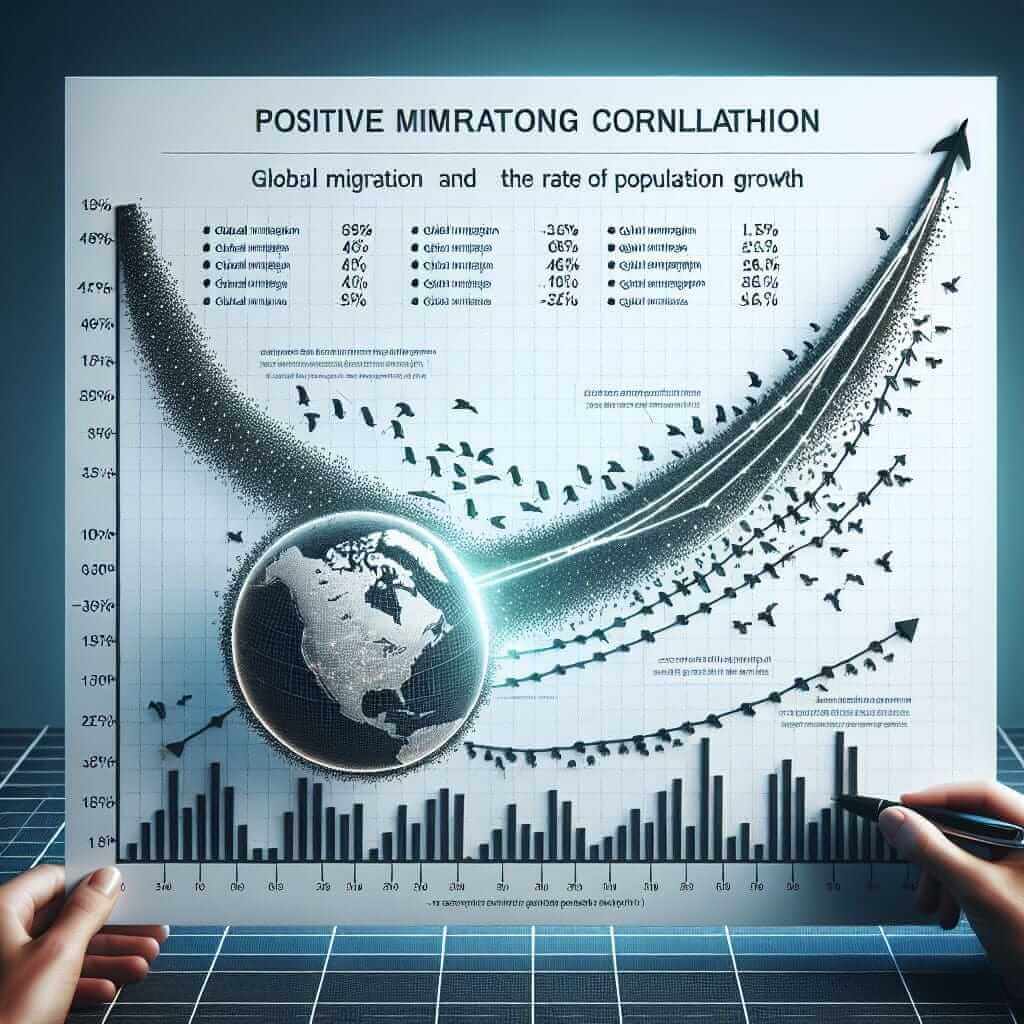Global migration, a phenomenon where people move from one country to another, has been a significant topic in population dynamics. This topic has appeared frequently in IELTS Writing Task 2 examinations. Understanding it can prepare you well for the test.
Sample Task 2 Questions:
- Discuss the effects of global migration on the demographic profile of a country.
- To what extent do you agree or disagree that global migration has positive impacts on a nation’s economy and society?
- Examine the influence of global migration on cultural diversity within host countries.
Main Content
Selected Question for Sample Essay:
Discuss the effects of global migration on the demographic profile of a country.
Task Analysis:
To effectively address this task, you need to explore how global migration alters the demographic profile of host countries. This includes changes in age structure, population growth rates, ethnic composition, and workforce demographics. Your essay must present a balanced discussion, assessing both positive and negative impacts.
Model Essay:
Global migration, involving the movement of people across borders, has profound implications for the demographic profiles of countries worldwide. This essay will discuss the various ways in which migration shapes demographic dynamics, considering both beneficial and adverse effects.
Firstly, one notable impact of global migration is the alteration of the age structure within host countries. Many immigrants are in their prime working years, typically between the ages of 20 and 40. Consequently, an influx of young, working-age individuals can temporarily alleviate the problems associated with an aging population, such as labor shortages and increased pension burdens. For example, in countries like Germany and Japan, migrants play a crucial role in stabilizing the workforce and supporting the elderly population. Thus, migration can be a strategic solution for demographic imbalances.
In addition to age structure, migration significantly influences population growth rates. Host countries often experience a boost in population growth due to the arrival of immigrants. For instance, Canada’s population growth is heavily reliant on immigration, given its low natural birth rate. By injecting a substantial number of residents, migrants help to maintain a sustainable population level, which is vital for economic stability and growth.

The ethnic composition of a country is another area profoundly affected by global migration. Migrants bring diverse cultures, languages, and traditions, contributing to the multicultural fabric of the host nation. This diversity can enrich a country’s cultural landscape, fostering greater tolerance and understanding among different ethnic groups. However, it can also pose challenges such as social integration and ethnic tension. Successful integration policies and community support are essential in harnessing the benefits of cultural diversity.
Despite these positive impacts, migration can also exert pressure on a country’s infrastructure and public services. An abrupt and significant increase in population can strain healthcare systems, educational institutions, and housing markets. For instance, in cities like London and New York, the high influx of migrants has led to increased demand for affordable housing and public services, sometimes outstripping supply. Hence, managing the scale and pace of migration is crucial to mitigating these pressures.
In conclusion, global migration exerts a multifaceted influence on the demographic profile of host countries. It can rejuvenate the age structure, boost population growth, and enhance cultural diversity, while also presenting challenges such as infrastructural strain. A balanced and well-managed approach to migration can maximize its benefits and minimize its drawbacks, leading to a more dynamic and prosperous society.
Word count: 389
Writing Tips:
- Vocabulary and Grammar: Use a variety of vocabulary and complex sentence structures. Avoid repetition and ensure clarity.
- Cohesion and Coherence: Utilize linking words (firstly, in addition, however) to ensure smooth transitions between paragraphs.
- Balanced Discussion: Address both positive and negative aspects to showcase a comprehensive understanding of the topic.
Key Vocabulary:
- Demographic profile (noun) /ˌdem.əˈɡræf.ɪk ˈproʊ.faɪl/: The characteristics of a population, such as age, gender, and race.
- Prime working years (noun phrase) /praɪm ˈwɜːr.kɪŋ jɪrz/: The age group typically considered most productive, often 20 to 40 years old.
- Population growth rate (noun phrase) /ˌpɑː.pjəˈleɪ.ʃən ɡroʊθ reɪt/: The rate at which the population is increasing or decreasing.
- Cultural diversity (noun phrase) /ˈkʌl.tʃɚ.l̩ daɪˈvɜːr.sə.ti/: A variety of cultural or ethnic groups within a society.
- Social integration (noun phrase) /ˈsoʊ.ʃl̩ ˌɪn.tɪˈɡreɪ.ʃən/: The process of blending and uniting different groups into a single community.
- Public services (noun phrase) /ˌpʌb.lɪk ˈsɜːr.vɪsɪz/: Essential services provided by the government to the public, such as healthcare and education.
- Infrastructure (noun) /ˈɪn.frəˌstrʌk.tʃər/: The fundamental facilities and systems serving a country, city, or area, including transportation and communication systems.
- Ethnic composition (noun phrase) /ˈeθ.nɪk ˌkɒm.pəˈzɪ.ʃən/: The makeup of a population in terms of its various ethnic groups.
- Multicultural (adjective) /ˌmʌl.tiˈkʌl.tʃə.rəl/: Relating to or including many different cultures.
- Labor shortages (noun phrase) /ˈleɪ.bər ˈʃɔːr.tɪdʒɪz/: Situations where there are not enough workers to fill job vacancies.
Conclusion
The topic of global migration and its influence on population dynamics is a rich area for exploration in IELTS Writing Task 2. It encapsulates various socio-economic and cultural dimensions that require a balanced and well-articulated approach. Practice with similar topics to enhance your skills and be prepared for the test. Other possible essay questions could include:
- Analyze the economic impacts of global migration on developing countries.
- How does global migration affect the labor market in host countries?
By understanding and practicing these aspects, you can achieve a high score in your IELTS writing.